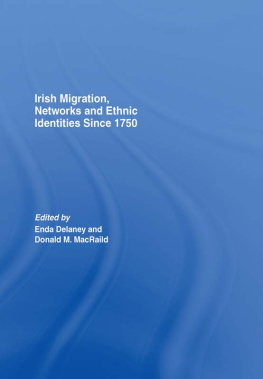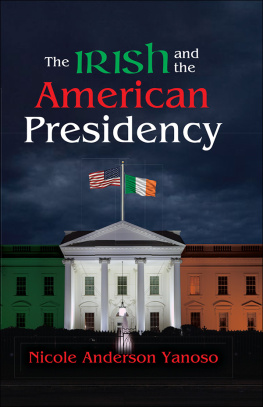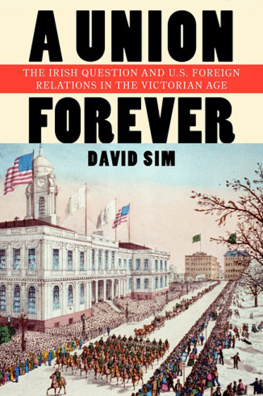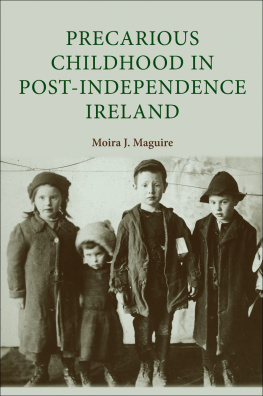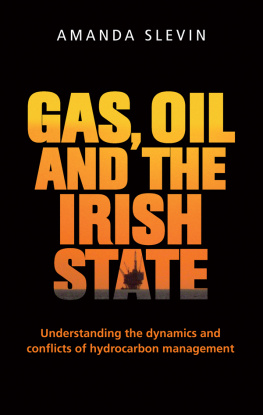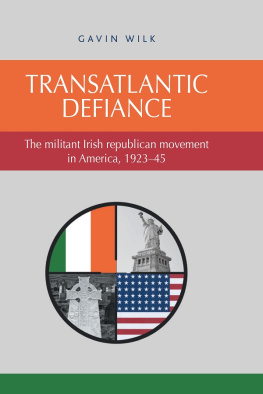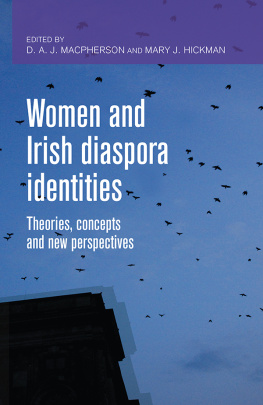Copyright Mervyn Busteed 2016
The right of Mervyn Busteed to be identified as the author of this work has been asserted by him in accordance with the Copyright, Designs and Patents Act 1988.
Published by Manchester University Press
Altrincham Street, Manchester M1 7JA, UK
www.manchesteruniversitypress.co.uk
British Library Cataloguing-in-Publication Data
A catalogue record for this book is available from the British Library
Library of Congress Cataloging-in-Publication Data applied for
ISBN 978 0 7190 8719 6
First published 2016
The publisher has no responsibility for the persistence or accuracy of URLs for any external or third-party internet websites referred to in this book, and does not guarantee that any content on such websites is, or will remain, accurate or appropriate.
Typeset in Minion by
Koinonia, Manchester
Acknowledgements
Some of the material in as Parading the green: procession as subaltern resistance in Manchester in 1867, Political Geography, 24:8 (2005), pp. 90333; Fostered to trouble the next generation: contesting the ownership of the martyrs commemoration ritual in Manchester 18881921, in N. Moore and Y. Whelan (eds), Heritage, memory and the politics of identity: new perspectives on the cultural landscape (Aldershot: Ashgate, 2007), pp. 6982; and The Manchester Martyrs: a Victorian melodrama, History Ireland, 16:6 (2008), pp. 357.
My accumulated debts to people and institutions over the years are so great that I hesitate before trying to pay tribute out of fear that I will omit some of the truly deserving, but I will try to be comprehensive and can only apologise in advance for any omissions.
Three institutions provided financial support. Manchester Geographical Society awarded a number of grants which were used to employ recent Manchester University geography graduates to extract data from census reports and newspapers. A grant was also awarded from the Research Fund of the School of Geography, and Manchester Statistical Society awarded 1,000.
Staff in several institutions were most helpful in making their collections available for study. In particular I must thank my fellow members of the Manchester and Lancashire Family History Society. They gave me access to all the material from the 1851 census for Manchester which their members had laboriously extracted from the enumerators books in the days before such data were available online, and they also provided opportunities to share my findings in a series of talks to the society. I would particularly like to thank Marnie Mason, Margaret Thornton and the late Terry Broadhurst and Peter Dolan. I would also like to thank the staff of the John Rylands Library on Deansgate and on the Manchester University campus, Dr Michael Powell and the staff at Chethams Library, Manchester, the staff of the Greater Manchester Archives Centre on Marshall Street, Dr Duncan Brody of the Greater Manchester Police Museum, the National Library, Kildare Street, Dublin, the Sidney Jones Library of the University of Liverpool and the Local Studies Department of Liverpool Central Library. I owe two special debts. The first is to the staff of the Local Studies and Archive Departments of Manchester Central Library for their great patience and cheerful helpfulness down the years. The second is to Father David Lannon of St Augustines Catholic church, All Saints, Manchester, the archivist for Salford diocese, who presides over a priceless resource with great care, patience and cheerfulness.
Certain individuals played a key role in encouraging me to embark on and persist in the study of the Irish in nineteenth-century Manchester. The late Professor Brian Rodgers of Manchester University School of Geography provided early encouragement, as did Emeritus Professor Brian Robson, who first suggested I write a book. Professor Mike Rose pointed me in the direction of the Family History Society. Terry Wyke of Manchester Metropolitan University History Department also prompted me to think of a book-length study. Early research efforts were undertaken with my colleague Dr Rob Hodgson, and we published some of the first results together with Tom Kennedy. Dr Paul Laxton of the Geography Department of Liverpool University provided sage advice in those early stages. Joe Flynn and his comrades in the Manchester Irish Education Group have given me frequent opportunity to share findings and ideas at their fine series of public lectures and conferences through the years, and Michael Forde of the Manchester Irish World Heritage Centre has always been a source of encouragement. I am also indebted to successive generations of geography undergraduates at Manchester University who submitted quite cheerfully to my research findings in lectures and seminars.
Amongst other individuals whom I must thank for their assistance and encouragement are Graham Bowden and Nick Scarle of the Drawing Office of the School of Geography at Manchester University, who drew the maps and diagrams, Professor John Belchem, Wyn Bromley, Professor Patrick Buckland, Sister Elizabeth Cahill, Gill Callander, Anna Challans, Isobel Chaplin, Danny Claffey, Jo Cooksley, Professor Graham Davis, Eileen Derbyshire, Professor Marianne Elliott, Emeritus Professor Emrys Evans, Ian Gavin, Brian Griffin, Ed Hall, Sean Hutton and my fellow members of the British Association for Irish Studies, Alistair Leithead, Tom Mills, Dr Nicola Morris of Chester University, Maureen Mulholland, Fergus OConnor, Patrick OSullivan, Margot Power, Kate Richardson, Helen Steele, Diane Urquhart, Janet Wallwork and Rev. Dr Nigel Wright. Sadly, Walter Cassin, Roland Griffin, Seamus Morgan, Liam McLaughlin and Professor Frank Neal died before this book was published in their time all were great sources of encouragement. The anonymous reader made suggestions which have greatly enhanced the final product. I have tried as far as possible to acknowledge all sources and apologise for any omissions. Errors of fact or interpretation are entirely my own. Finally, thanks are due to Fiona Little for copy-editing, Hilary Faulkner for the index and to Emma Brennan, Paul Clarke, Dee Devine and Rebecca Mortimer at Manchester University Press for all their help.
But, above all, thanks to my wife, Helen, who makes everything possible and worthwhile.
Liverpool, June 2015
Introduction
In recent years studies of the Irish diaspora have flourished, with the growth of work on the Irish in Great Britain particularly notable. Within this body of work there has long been a focus on nineteenth-century Irish movement across the Irish Sea, and some notably fine overviews have been produced.1 Certain themes have constantly recurred. One is focused on the causes of the outflow from Ireland, often accompanied by analysis of the extent to which Britain was a relatively attractive destination. In both cases emphasis is on economic factors, supplemented by political, socio-cultural and personal considerations. A second theme is the temporal and regional pattern of settlement in Britain, noting how the level of emigration fluctuated with varying economic conditions on both sides of the Irish Sea and how the geography of settlement was influenced on the macro scale by employment opportunities and in detail by the location of cheap accommodation, existing Irish communities and familial links. Within this literature there has been a lively debate on the extent to which the Irish shared residential space with the native population. A third theme has centred on questions of employment, the traditional picture arguing that the successive Irish inflows were overwhelmingly unskilled or semi-skilled working-class and largely remained in these categories. Running alongside and closely related to this narrative, the fourth theme stressed the material poverty of the Irish immigrants, their notably bad housing and living conditions and the varieties of anti-social behaviour which often went in tandem. A fifth preoccupation has been the significance of Roman Catholicism as the faith of the great majority of the immigrants and its centrality not merely to the spiritual life of individual migrants, but in the social, cultural and, indeed, the political life of Irish migrant communities. The sixth body of work took up this latter dimension and focused on the political activities of the Irish in Britain, the extent to which they were expressed through parliamentary or violent means and the relationship to contemporary British political causes and movements. Often linked with these last two themes is a discussion of the reactions of native reactions to the incomers, the relationships which developed between the two and the extent to which the Irish integrated with British society and the degree to which they were and remained a people apart.


